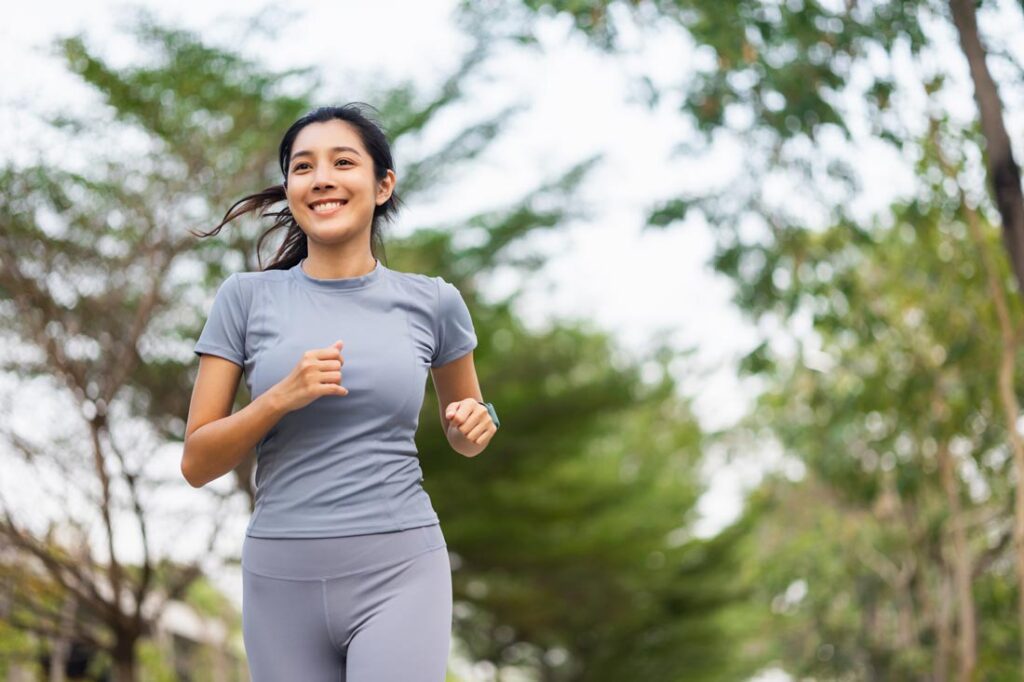At the beginning of the year, the thought of completing a marathon was completely out of the question for me. Who would torment themselves like that? Only about 0.17 percent of the population, apparently. And let’s not forget the legend of where the marathon came from: the Greek messenger Pheidippides, who died immediately after running 25 miles to deliver news of a victory. It’s not that I didn’t find marathons impressive. I simply had no interest in pushing my body to that limit.
Learning resilience on the Camino de Santiago
My mindset changed this summer when I walked the Camino de Santiago, a 500-mile pilgrimage route from Saint-Jean-Pied-de-Port, France, to Santiago de Compostela, Spain, with only a backpack. Resilience was a recurring theme on the Camino. Each day, as the sun rose, my fellow pilgrims and I had to consciously decide to continue walking, endure aches and exhaustion, and persist in our journey.
Along the way, I met Raul, an ultramarathoner in his late 60s. As he shared his experience, he referenced a place in the mind called the pain cave, a cave of resilience where you meet yourself. In the pain cave, you find—and push—your limits. The cave isn’t always the same size, and the more time you spend in it, the more you chip at it and widen it. The mental image fascinated me; I had never thought to train myself for a higher stress tolerance.
The idea of building resilience isn’t just a story told by marathoners to justify putting themselves through psychologically challenging experiences. As clinical psychologist Dr. Mary Anderson explains, resilience is “our ability to successfully navigate challenges; to learn to adapt as necessary and find healthy ways to cope while facing hardships and traversing the vicissitudes of life.”
It involves a complex interplay of biological, psychological and social factors. It isn’t an innate trait; it can be cultivated and developed. Anderson says that even our perception of stress is subjective.
“In the same situation, one person may feel healthier or optimal amounts of stress while another person could feel really stressed out,” Anderson explains. “One of the factors that could impact the perception of whether or not a situation is stressful to that person is their confidence level.”
Pushing myself outside my comfort zone
During my Camino journey, I unwittingly embarked on a path to enhance my resilience. The daily rigors of the pilgrimage forced me to adapt, find inner strength and persist despite discomfort. This process wasn’t merely physical; it delved into the intricate web of neural connections in my brain. I was building that confidence that Anderson referenced.
Neuroscientific research reveals that resilience is closely tied to the brain’s ability to rewire itself, a phenomenon known as neuroplasticity. The more we challenge ourselves and push beyond our comfort zones, the more we stimulate the growth of new neurons and connections, enhancing our capacity to cope with stress.
After I finished my Camino, I couldn’t get the idea of the pain cave out of my head. I’d never really pushed myself physically, but I wanted to continue going outside of my comfort zone. Inspired by Raul, I made the goal to run a marathon before the end of the year. Run Barbados, the largest marathon in the Caribbean, was an immediate draw. With the epic backdrop, festivities throughout the weekend and perfect weather for a winter run, I signed up. I had five months to train and plenty of time to build a strong foundation.
“Endurance sports can be a powerful, concrete way of showing ourselves that we are capable of perseverance,” Anderson says. “That by staying determined, tenacious and disciplined (e.g., going for that scheduled long training run on the weekend, especially when you don’t feel like it)—you can successfully achieve your goals.”
Resilience and marathon training
Four to five times a week, I get out of bed, lace up my shoes and run. I find the long, slow runs especially tormenting. In order to build a strong aerobic base for my body, I have to get my heart used to exerting more energy over a sustained period of time.
It’s not just the physical effort of running. When running for an hour or more, the challenge is to keep my mind from ruminating on every problem or every decision I’ve come across in my life. With so much time on my feet and with my mind, I’ve had to learn to talk to myself differently and navigate out of those mental spirals.
As I’m running, I’ll bring myself back into the present, focusing on my breathing and posture, and shaking out any tension I hold (it’s usually in my shoulders). Another favorite has been verbalizing my pride in myself, my journey and my growing endurance. I’ve found that establishing that relationship of trust and safety has been essential in pushing my body and mind beyond their comfort zone.
Pushing myself toward confidence
When I’m doing speed runs, the challenges move into a struggle between my mind and body. I have to remind myself that growth is at the edge of discomfort; that I’m not in danger, just uncomfortable. I have to remind myself that I still have more to give. Pushing my body physically is hard, but I feel so much pride and confidence at the end of the run.
“The marathon is just one day, but it’s all the training runs,” Anderson says. “You know, when it’s a little drizzly out, and you don’t feel like going but you do anyway. Or when you’re finding ways to troubleshoot and pivot so that you can keep making progress toward your bigger goal. Those moments add up to building confidence around your capacity to navigate challenges. And again, that’s what’s going to enhance your confidence that you can manage stress.”
This mindset has kept me going. With each week, I’ve slowly increased my mileage. Each week, I confront the voices in my head that say I can’t possibly run that far. There are days when I don’t want to get out of bed early in the morning to get my miles in before the heat, but it’s not just about performing well in December. It’s also about showing up. What kind of person am I? Do I follow through? Each time I push through the discomfort, I gain more confidence in my mind and my body, and it spills into every aspect of my life.
Photo by GBJSTOCK/Shutterstock.com











